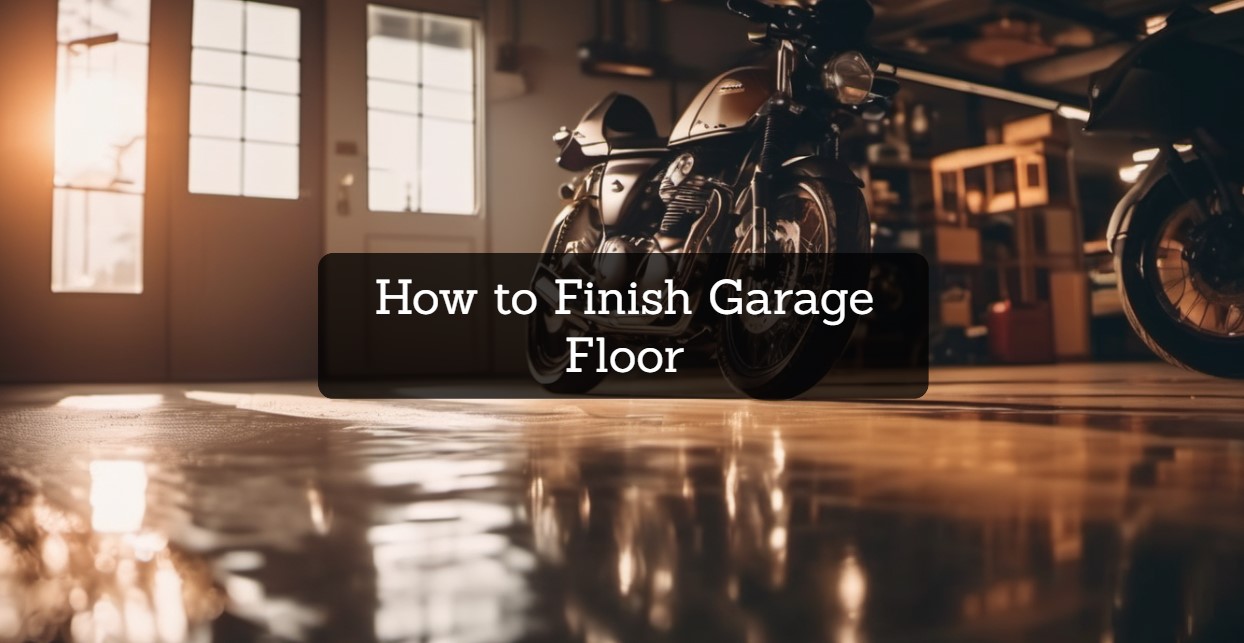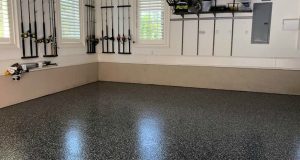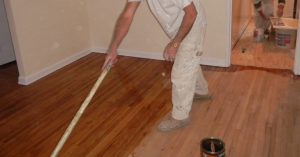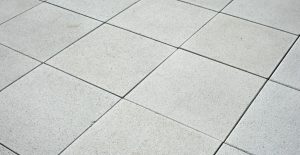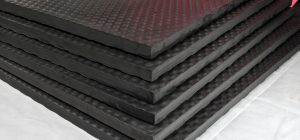Is your garage floor a drab, cracked eyesore? Say goodbye to that tired concrete and transform your space with a beautiful, finished floor! Not only will it look amazing, but it’ll be easier to clean, more durable, and potentially increase your home’s value. Ready to upgrade your garage floor but overwhelmed by the options? Don’t worry! This article compares five of the most popular finishes, helping you find the perfect one for your needs and budget.
P.S. Looking for more comfort? Explore the Best Garage Heaters to make your garage truly inviting. Stay tuned! We’ll dive deeper into each option, exploring their pros, cons, and installation details. By the end, you’ll be ready to choose the perfect floor for your dream garage!
1. Epoxy
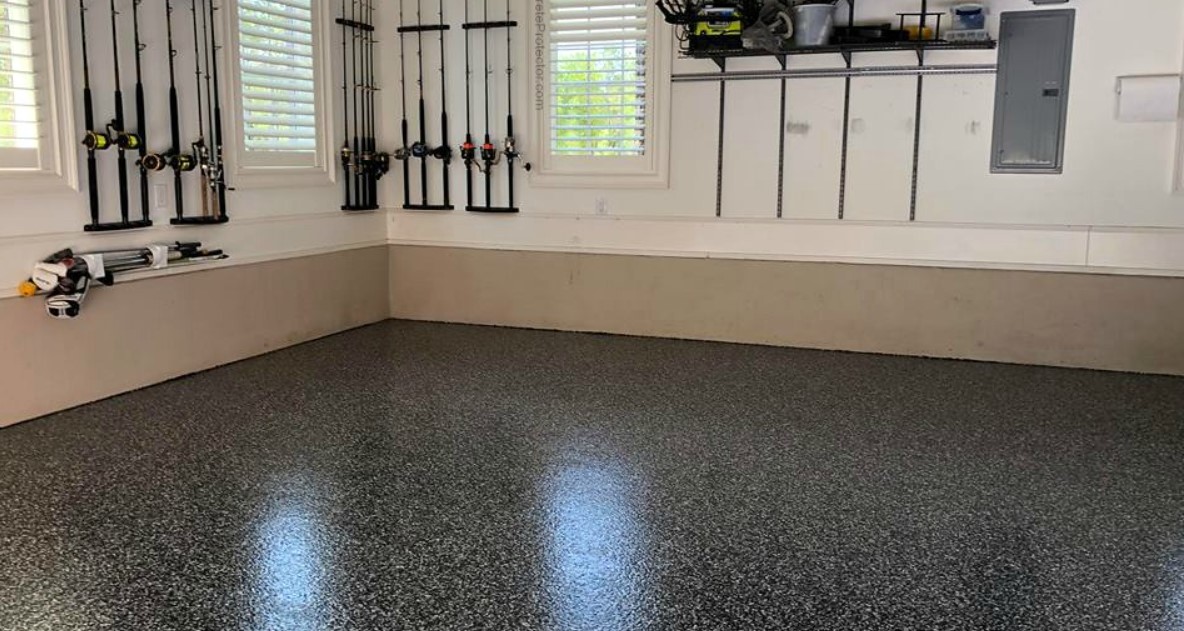
Epoxy is known for its exceptional durability and long-lasting qualities. It can be applied in various colors and finishes, providing a versatile option for any space. With its resistance to oil, grease, and chemicals, epoxy is easy to clean and maintain. Whether it’s concrete, wood, or other surfaces, epoxy can be successfully applied, creating a tough and chemical-resistant protective layer.
This makes it an excellent choice for high-traffic areas, such as garages. Additionally, epoxy offers the opportunity for customization with chips, flakes, or even unique 3D effects.
Pros:
- Extremely durable: Epoxy can last for years, even in high-traffic areas. It’s resistant to scratches, chips, and cracks.
- Easy to clean: Epoxy floors are non-porous and seamless, making them easy to sweep, mop, and clean up spills.
- Chemical resistant: Epoxy is resistant to oil, grease, and most chemicals, making it a great choice for garages where you store cars, tools, or other chemicals.
- Wide variety of colors and finishes: You can choose from a wide variety of colors and finishes to create a custom look for your garage.
- Can add value to your home: A finished garage floor can add value to your home, making it more appealing to potential buyers.
Cons:
- More expensive than other options: Epoxy is one of the more expensive garage floor finishes.
- Can be slippery when wet: Epoxy can be slippery, especially when wet. However, there are non-slip additives that can be added to the epoxy to make it safer.
- Difficult to install yourself: Installing epoxy flooring requires some skill and experience. It’s best to hire a professional installer to ensure a good job.
- Strong fumes during installation: The epoxy fumes can be strong during installation, so it’s important to properly ventilate the garage.
You may also like: Great Polyaspartic Garage Floor Coating Ideas
2. Paint

While paint is a more affordable option compared to epoxy, it falls short in terms of durability. It is highly susceptible to scratches and stains. Despite these drawbacks, paint can still be a suitable choice if you are on a tight budget or if you prefer changing the color of your floor frequently.
Paint is a liquid coating that can be easily applied to the concrete surface. It is available in a variety of colors and finishes, and the application process is relatively straightforward. However, it is important to note that paint is not as long-lasting as epoxy and is more prone to scratches, stains, and wear.
Pros:
- Affordability: Paint is generally much cheaper than epoxy, making it a cost-effective option for those with budget constraints.
- Ease of application: Paint is typically a one-part solution, making it simpler for DIY applications compared to the more complex two-part epoxy system.
- Wide range of colors: With paint, you have a vast array of colors to choose from, allowing you to personalize your garage floor and match it with your existing decor.
- Quick drying time: Paint tends to dry faster than epoxy, enabling you to use your garage sooner after application.
- Easy touch-ups: If you encounter a scratch or stain on your painted floor, it is typically easier to touch up or repaint a small area compared to epoxy.
Cons:
- Lack of durability: Paint is not as durable as epoxy and may chip, peel, or crack over time, especially in areas with high foot traffic.
- Vulnerability to scratches and stains: Paint is more prone to scratches caused by tools and equipment, as well as stains from oil, grease, and chemicals.
- Increased maintenance requirements: Painted floors may require more frequent recoating compared to epoxy floors to preserve their appearance and protect the concrete.
- Limited resistance to chemicals: Paint may not offer the same level of chemical resistance as epoxy, particularly when exposed to substances such as gasoline or antifreeze.
You may also like: Garage Floor Paint Ideas (New Types & Colors)
3. Staining
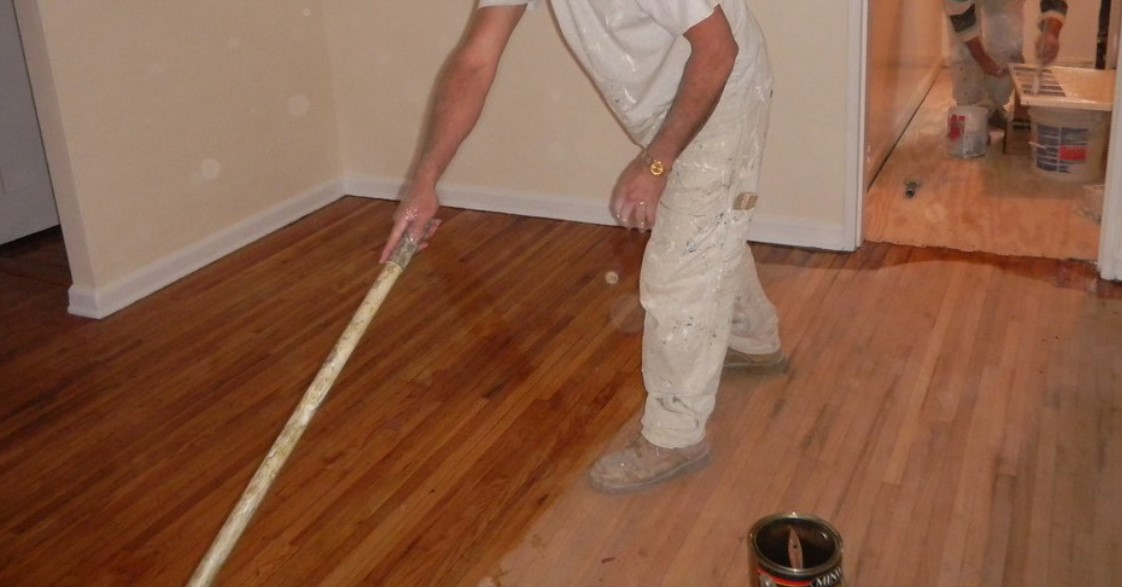
Staining is a less commonly chosen option for achieving a natural look, but it can be a great choice. Stains are available in various colors and can be used on both concrete and wood floors. This option is suitable for environments with light to moderate foot traffic and for those who want a unique aesthetic that complements the natural character of concrete.
However, it is important to carefully consider its limitations in terms of durability and chemical resistance, especially for demanding needs. When compared to painting and epoxy, staining occupies a specific position with its advantages and disadvantages.
Advantages:
- Natural Aesthetic: Stains enhance the texture and character of concrete, giving it a warm and earthy appearance instead of completely covering the surface.
- Wide Color Options: Stains come in translucent and opaque colors, allowing for customization while preserving the natural variations of the concrete.
- Penetrating Protection: Stain penetrates the concrete, providing mild protection against stains, abrasion, and dust in comparison to unsealed concrete.
- Relatively Affordable: Staining is usually cheaper than epoxy but slightly more expensive than paint.
- Breathable: Unlike paint or epoxy, stained concrete remains breathable, allowing moisture vapor transmission, which can be advantageous in colder climates.
Disadvantages:
- Less Durable: Stains offer less protection against wear, tear, and chemicals compared to epoxy, making them less suitable for high traffic or demanding environments.
- Accentuates Imperfections: Staining can highlight cracks, chips, or unevenness in the concrete, necessitating proper surface preparation before application.
- Limited Chemical Resistance: Although stains provide better protection than unsealed concrete, they offer moderate resistance against spills and chemicals, necessitating additional sealing for optimal resistance.
- More Challenging Application: Staining can be more challenging to apply than paint, requiring proper technique and an understanding of various stain types and their effects.
- Regular Maintenance Required: Stained concrete needs periodic resealing to maintain its protective properties and aesthetic appeal.
You may also like: Best Garage Floor Drain Systems to Buy
4. Tile
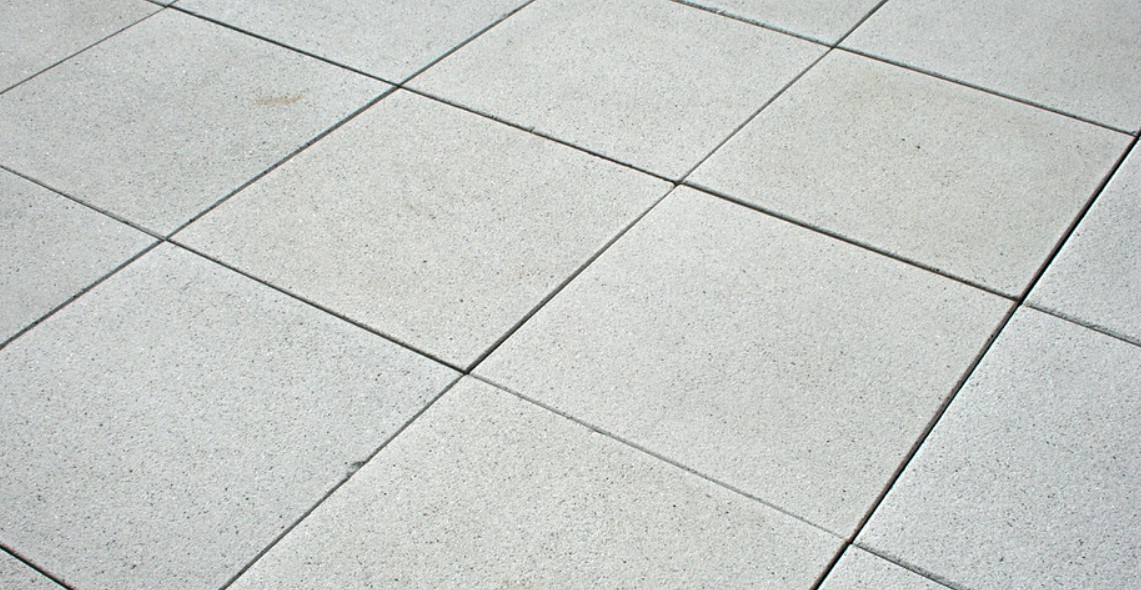
Tile is a great option for garages that prioritize durability, easy cleaning, and a stylish look. Its resistance to wear, tear, and chemicals makes it perfect for tough environments. However, before choosing tile for your garage floor, it’s important to carefully consider the upfront cost, potential installation complexity, and comfort.
Tile offers a unique combination of durability, aesthetics, and ease of cleaning for garage floors. However, it’s crucial to weigh the following factors:
Pros:
- Highly durable: tile, especially ceramic and porcelain, is extremely resistant to wear and tear, scratches, and chemicals, making it ideal for high-traffic garages and workshops.
- Easy to clean: the non-porous surface of tile makes sweeping, mopping, and spills removal effortless, ensuring a hygienic and visually pleasing environment.
- Wide variety of styles: tile comes in countless colors, patterns, and textures, allowing for complete customization and the creation of a stylish and personalized garage space.
- Stain and moisture resistant: tile is impervious to most stains and moisture, safeguarding against damage from spills and maintaining long-term visual appeal.
- Low maintenance: once installed, tile requires minimal maintenance compared to alternatives like paint or unsealed concrete.
Cons:
- Expensive: tile installation can be costly, especially with high-quality materials, intricate patterns, or professional installation.
- Cold and hard underfoot: standing on tile for long periods can be uncomfortable, particularly in colder climates. Consider using rugs or mats for added comfort.
- Slippery when wet: some glazed tiles can become slippery when wet, which can pose a safety concern. Opt for textured or matte finishes for better traction.
- Installation complexity: depending on the type of tile, size, and desired pattern, installation can be complex and may require professional expertise.
- Grout maintenance: the grout between tiles can trap dirt and requires regular cleaning and occasional re-sealing to prevent staining and water damage.
5. Rubber mats
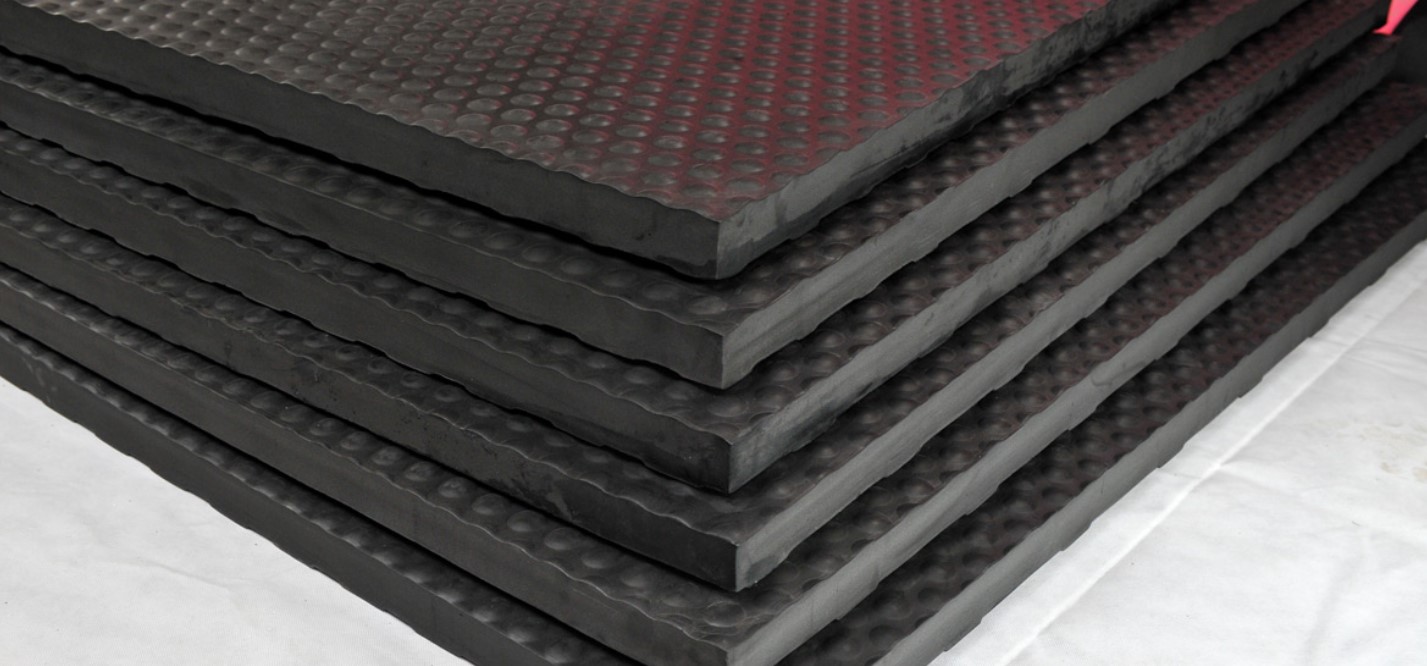
Rubber mats serve as a convenient and cost-effective choice for protecting garage floors. They are simple to install, clean, and replace, making them ideal for use in light-duty garages or specific areas requiring targeted protection. However, it is important to consider their limited defense capabilities, potential moisture issues, and less refined aesthetics when dealing with demanding environments or aiming for a polished appearance.
Rubber mats provide a practical and budget-friendly solution for safeguarding garage floors from various elements. Though not a permanent option like coatings or tiles, their ease of use, affordability, and low maintenance make them a popular selection among many individuals:
Advantages:
- Affordability: Rubber mats are significantly cheaper compared to most long-lasting flooring alternatives like epoxy or tile, making them a cost-effective choice for basic garage floor protection.
- Ease of installation: Individual mats or interlocking tiles can be effortlessly laid down without the need for adhesives or complex installation procedures.
- Versatility: Mats come in different sizes, thicknesses, and textures, allowing for customization of coverage and traction requirements in different areas of the garage.
- Ease of cleaning: Rubber mats are non-porous and effectively repel dirt, oil, and grease. They can be easily swept, rinsed, or hosed clean, ensuring convenient maintenance.
- Replaceability: In the event of damage or excessive wear, individual mat pieces can be replaced inexpensively without impacting the entire floor.
- Noise reduction: Rubber mats possess sound-absorbing properties, offering some level of noise dampening in the garage, which can be particularly helpful during noisy activities.
Disadvantages:
- Limited protection: Mats primarily shield against surface dirt, spills, and light wear. They offer limited defense against heavy impacts, chemicals, or extreme temperatures.
- Moisture trapping: If not adequately dried, moisture trapped beneath the mats can lead to mold or mildew growth on the concrete floor underneath.
- Potential movement: Individual mats, especially smaller ones, may shift or slide due to traffic or temperature changes, necessitating occasional repositioning.
- Unappealing appearance: While some mats feature textured or patterned designs, their overall look tends to be more industrial or utilitarian compared to other flooring options.
- Incomplete floor coverage: Depending on the chosen mat size and layout, they may not cover the entire garage floor, leaving certain areas exposed.
You may also like: Best Garage Floor Mats for Winter
Here are the general steps on how to finish a garage floor with epoxy:
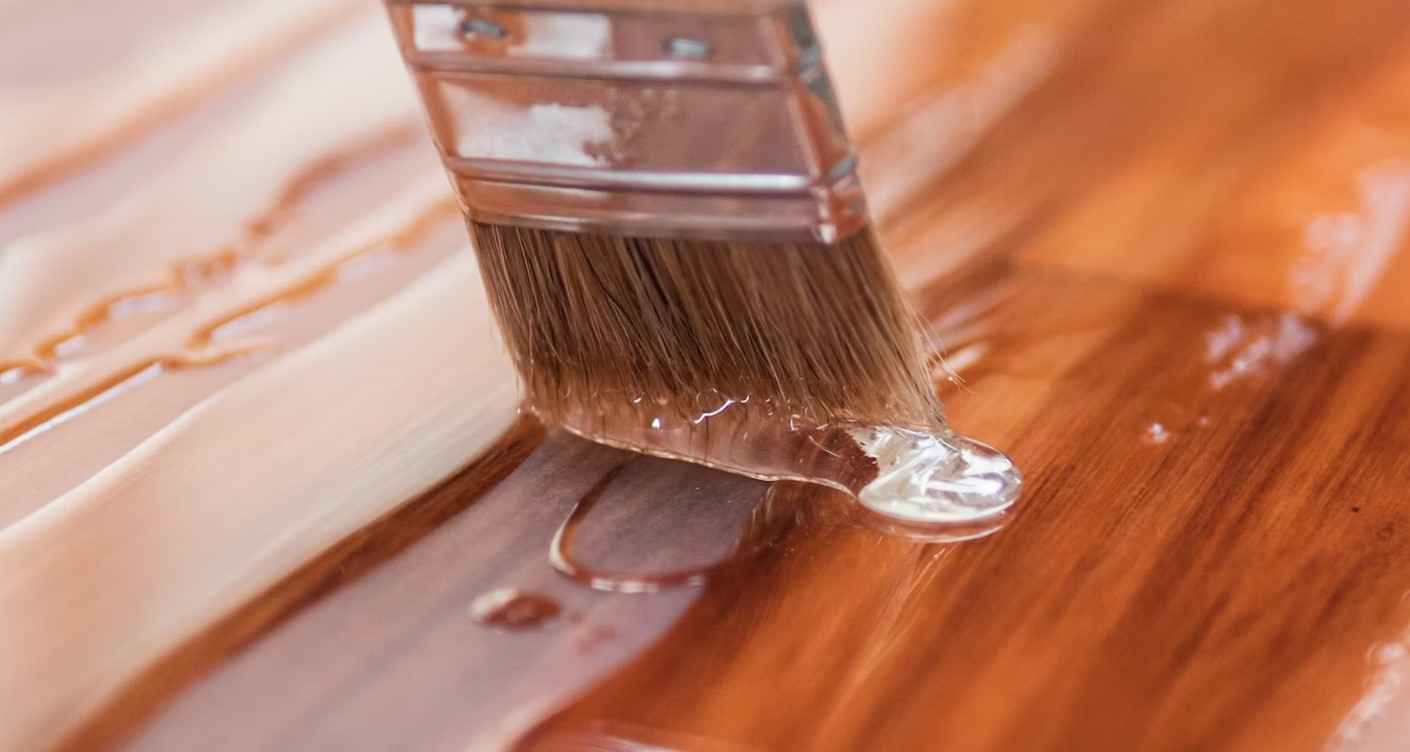
After selecting a finishing option, the first step is to prepare the floor. This involves thorough cleaning, removal of oil or grease stains, and repair of any cracks or holes.
- Cleaning the floor involves sweeping or vacuuming to remove loose dirt and debris. Then, use a degreaser or concrete-specific cleaner to wash the floor. Rinse it thoroughly and ensure it is completely dry.
- Repair any cracks or holes in the floor by filling them with a concrete patching compound. Allow the compound to dry fully.
- Next, apply an epoxy primer to the floor. This primer helps the epoxy bond to the concrete. Wait for the primer to dry completely.
- Once the primer is dry, mix the epoxy according to the manufacturer’s instructions. Pour the epoxy onto the floor and spread it out evenly using a roller. Allow the epoxy to dry completely.
- To protect the epoxy from scratches and stains, apply an epoxy topcoat to the floor. Let the topcoat dry completely.
After completing the entire process, it is crucial to allow the garage floor to cure entirely before using it. The curing time varies depending on the epoxy type, typically taking 24-48 hours.

